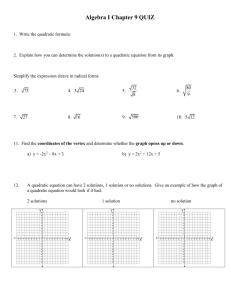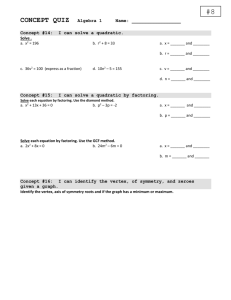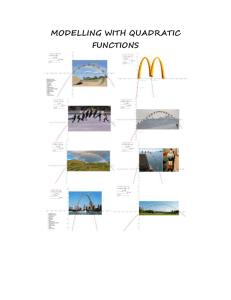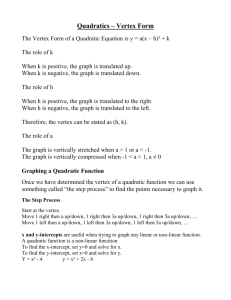Title of Lesson
advertisement
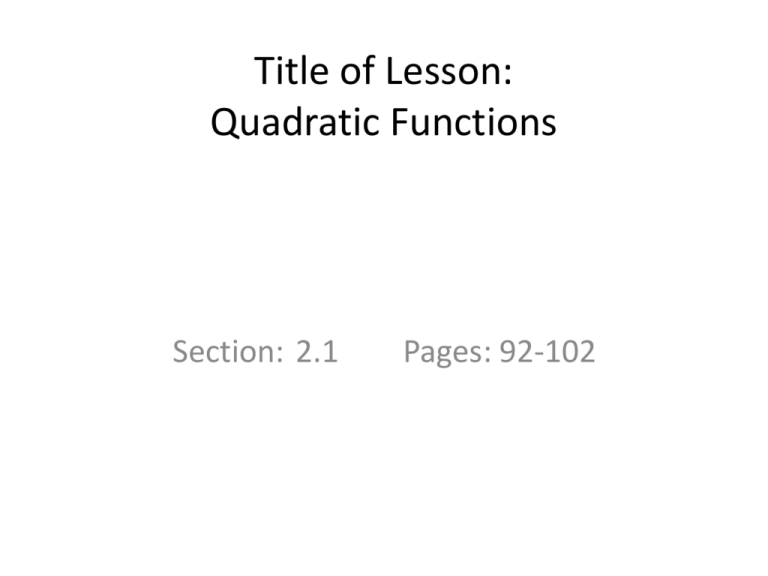
Title of Lesson: Quadratic Functions Section: 2.1 Pages: 92-102 My Learning Goals 1. Be able to analyze the the components of a quadratic function. 2. Be able to convert between the different quadratic forms. 3. Use quadratically modeled functions to solve minimum/maximum problems. Vocabulary/Formulas 1. Quadratic function definition: f(x)= ax +bx+c 2 2. Standard form of a quadratic function: f(x)= a(x-h) +k 2 3. Axis of symmetry: the line in which all parabolas are symmetric to. 4. 5. Prerequisite Skills with Practice 1. Complete the square. 2. Solve for real numbers. 2 f(x) = x +6x -1 0 = 4(x - 3) - 9 f(x)= 2x +5x+ 4 0 = (x - 3) +1 2 2 2 Notes Dissecting a quadratic functions in the form f(x)= ax +bx+c 2 Vertex: Axis of symmetry: Concavity: x – intercept(s): (factoring or quadratic formula?) y – intercept: f(x)=-x -4x+21 2 Notes Dissecting a quadratic functions in the form f(x)= ax +bx+c 2 Vertex: Axis of symmetry: Concavity: x – intercept(s): (factoring or quadratic formula?) y – intercept: f(x)= x +8x+11 2 Notes Building the standard form of quadratic function. Vertex: Axis of symmetry: Concavity: x – intercept(s): (factoring or quadratic formula?) y – intercept: f(x)= 2x +8x+7 2 f(x)= x +3x-7 2 Notes Building an equation based on a vertex and a point. Write the standard form of the equation of the parabola whose vertex is (1,2) and goes through the point (3,-6). Notes Using properties of quadratics to solve problems. A baseball is hit point 3 feet above the ground at a 100 feet per second at a 45 degree angle with respect to the ground. The path of the baseball is modeled by the function h(t)= -0.0032t +t +3 2 where h is height in feet and t is time in seconds. Homework Assignment: Pg. 99 (1-4) all (7-25) odd (29-33) odd (53-56) all 65,66



